How to be a successful children’s book author: Kim Norman tells all
Wildly successful children's book author Kim Norman answers questions about how to get started and what works with book promotion.
Affiliate Disclosure: This post contains Amazon Associate links, which means if you click on them and make a purchase, I will receive a couple of pennies (at no extra charge to you).
I first connected with incredibly successful children’s book author Kim Norman a few years ago when I reviewed her popular self-published book, Sell Books and Get Paid Doing Author School Visits, here. It’s a must-read for all children’s book authors.
I don’t usually connect with the authors of books I review on the blog – not even briefly. Most don’t even know I’ve reviewed their book.
I’m glad this one was different, though. Kim has become a friend – and a very, very fun one at that.
I asked Kim to share insights about writing and marketing children’s books today. Here’s what you need to know about her first.
Introducing children’s book author Kim Norman
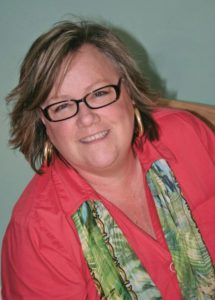
Kim Norman is the author of more than 20 children’s books, already or soon to be in print, published by Sterling; Scholastic; Penguin/Random House; Farrar, Straus and Giroux; Candlewick; and Abrams.
Titles include I Know a Wee Piggy, which was selected by the Dolly Parton Imagination Library to be distributed to nearly a third of a million youngsters. Puddle Pug
was distributed in FiveBelow stores nationwide in a special boxed set with a pug doll. (Which checked off a career bucket list item for Kim to see one of her characters made into a plush toy.)
Her most enduring title is her best-selling Ten on the Sled. The book, sometimes featured in school winter programs, has inspired at least one holiday parade float.
Calling herself a “bedtime reading evangelist,” Kim has been invited to countless schools around the US to talk to students about her favorite thing: books! (And be sure to read my review of her book on author school visits here.)
What are Kim’s secrets?
I’m thrilled by how generous Kim was with what she’s learned as a popular children’s book author. Pour a cup of coffee or tea and settle in to learn.
I think new parents and retired teachers share a common mission: To write a children’s book. I’ve never done it, but I know it’s a lot harder than it looks. What’s the hardest part of writing a children’s book?
When I talk to kids in schools, I always tell them that the very first thing you need to be a writer is … (wait for it!) … PATIENCE! (“Wait for it.” Get it?)
I’m in a large FB group of those who self-publish children’s books, many of which are lovely books, but all too often I see a new member pop in and say, “I’ve just finished writing my first children’s book. Any advice on how to publish it?” I never say it, but I always want to say, “Okay, first: tear it up and write another one. And another and another.”
 I never do say that because it sounds mean, but honestly, we’re no more ready to publish the first draft of our children’s book than we are to play concert piano as soon as we learn “Chop Sticks.”
I never do say that because it sounds mean, but honestly, we’re no more ready to publish the first draft of our children’s book than we are to play concert piano as soon as we learn “Chop Sticks.”
Since I’m primarily a picture book author, I’ll mostly talk about them in this interview.
There’s so much about a picture book that’s not obvious to the casual reader: pacing, word choice, characterization, story arc, tension (even in a story about a child learning to tie a shoe, there needs to be at least a little tension), on and on. This includes remembering to leave space for the illustrator to tell part of the story by not describing things that can be shown in the pictures.
We’re no more ready to publish the first draft of our children’s book than we are to play concert piano as soon as we learn “Chop Sticks.”Click to tweetWhat do you like most about being a children’s book author?
I love the variety. My stories are short, so I don’t need to spend a year on them, although as I mentioned above, I do revise many times, so it’s not one-and-done. I also like that it allows me to pursue things I think are interesting.
I’m a closet science geek, so I love the research that can go into even a fictional manuscript about arctic animals on the sled.
What “how to get started” advice can you offer those who want to become a children’s book author?
Here are the first two things I suggest to those who want to become a children’s book author:
- Go to the library and check out as many picture books as they’ll allow. Take them home and read them, paying attention to how the story flows from page to page. For instance, if it’s a humorous book, you’ll notice that the “punchline” — whether visual or verbal — nearly always falls after a page turn. Aim to read at least 100 books in this analytical way. Hey, they’re short. It can be done in a few weeks.
- Choose at least three or four of the ones you like best and type up the text. Now close the book and study the text with no pictures in sight. The first thing you’ll notice is that the story feels a little bald and unfinished. Of course, it IS unfinished because the pictures should tell half the story. If your own story reads as mostly complete, then it’s not a picture book manuscript.
It may be a great story for a magazine where there are only one or two pictures for the whole story, but it’s not a picture book manuscript because you’ve taken over some of the illustrators’ job.
Look even more closely at the typed text. Count the words of the whole story. Current picture books tend to be much shorter than when we were little. Now count how many words per sentence. Compare the length of the sentences at the beginning of the story to those at the end.
For pacing the story, you may find that sentences in the midst of the action are very short whereas, nearing the end, the sentences may be longer. This helps slow the pacing like a train pulling into the station.
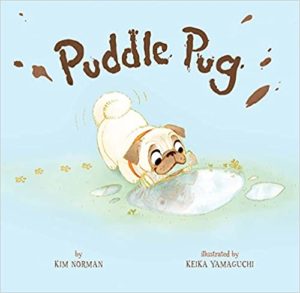 I mentioned two, but a third important point is if you plan to write in rhyme, get lots and lots of beta readers. If you know anyone who is musically inclined, ask them to read the manuscript aloud to you (cold read, no practicing!) so you can hear where they stumble on the rhythm.
I mentioned two, but a third important point is if you plan to write in rhyme, get lots and lots of beta readers. If you know anyone who is musically inclined, ask them to read the manuscript aloud to you (cold read, no practicing!) so you can hear where they stumble on the rhythm.
I suggest a musical friend because they’re more likely to have a strong sense of rhythm. Usually, the biggest problem isn’t the rhyme, it’s the meter. So plan to work even harder on a rhyming manuscript, with many, many, many revisions.
Never settle for the first or even second draft.
Never settle for the first or even second draft.Click to tweetWhen it comes to book promotion, what are the one or two tactics you can count on that will help build awareness and sales?
I’m embarrassed to say I can get very lazy about this. And that’s not because I’m spoiled by having publishers who send me on tours. I’m at 20-plus books now with never a tour in sight.
But I learned the hard way, from my first book, that there’s not a lot an author can do to hugely affect sales for nationally published books. I worked my fanny off for my first book, sending out press releases, even getting my own and several critique partners’ books featured in a huge NY newspaper with something like a million readers. But it really didn’t do much for sales.
But that’s partly because my books are traditionally published. So unless it helped sell thousands of books, it’s not going to impress my publisher.
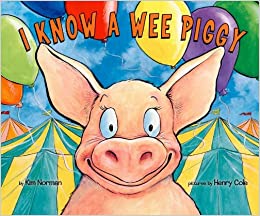 On the other hand, I think an article like that could make a big difference for a self-published author who makes higher royalties and can make sure there are local events mentioned in the article. My neighbor self-publishes and does a much better job than I do getting the word out.
On the other hand, I think an article like that could make a big difference for a self-published author who makes higher royalties and can make sure there are local events mentioned in the article. My neighbor self-publishes and does a much better job than I do getting the word out.
But since the two publishing models are so different, a street fair or newspaper article will do her more good than it will me since, again, she makes much higher royalties when she sells a book.
Which makes it sound like I must be crazy to slog through the process of traditional publishing since it’s slooooooow and I usually receive only 5% of the royalties (having split the average 10% with the illustrator.) But thanks to my publishers’ much wider distribution, I’m getting 5% on thousands of books, as opposed to my neighbor’s higher royalty on, perhaps, hundreds, and having worked a LOT harder to bring the book to print.
So it’s just a different model with pros and cons for each. I once had a book go into its third printing even before it was released. I can’t take credit for that, other than it being some of my best writing, if I may say so.
Mostly that was thanks to my publisher sending out review copies, catching the eye of lots of teachers and librarians who could see this would be a great title for their students. Plus, it had a nice Halloween hook, so it caught parents’ eyes, too.
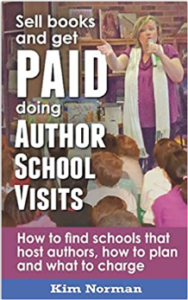 So here’s something I do that works (at least when there’s not a pandemic on): author visits.
So here’s something I do that works (at least when there’s not a pandemic on): author visits.
Publishers really do appreciate that I do them, because they do sell books, and on top of that, I get paid for my time. In fact, that’s what I titled the book I wrote on the subject: Sell Books and Get Paid Doing Author School Visits. Embarrassingly mercenary title.
Of course, it’s not all about the money, it’s also about the kids, but I do want people to buy my author visit book, after all.
What have you tried for book promotion that was a complete flop?
Oh gosh, I must be really bad at it, because I can think of more flops than successes! (That’s why we all need you, Sandra!)
I once tried to run an art contest through the local art center. They never gave out the coloring pages to a single kid! About a day or two before the awards were supposed to be presented, the youth director at my church— God bless her! — found a few dozen kids to participate.
Add to that, it was about 900 degrees the evening the awards were presented and the art center director didn’t even let me know she was doing a presentation up the street related to something else. (Note to self: Never work with her again!) So that’s my biggest disaster memory.
What I learned was to not trust that a partner is going to follow through (and to not wait so long to check on it!), and also to not make things too complicated. If you’re asking people to jump through hoops, they’ll genuinely mean to do it, but then time will pass and you may have very few participants.
So if you’re looking for participation from your audience, make it super easy. Put in the live links, write the tweet for them to copy and paste, etc.
Oh and giveaways seem to work well for engagement.
I’m still not very good at Twitter. Mostly my posts get crickets. But I once posted a giveaway of some books inside a repurposed vintage suitcase, asking people to repost etc. for a chance to win, and dang.
That post was seen by something like 40,000 people in no time. Still lame by Kardashian standards, but pretty good by my cricket standards.
What’s your best marketing tip for children’s book authors?
First, write a really, really good book. That’s best accomplished with lots and lots of revision.
Then, I’d say author visits are the best tool for direct sales and really can sell a lot of books in a single day.
Author visits are the best tool for direct sales and really can sell a lot of books in a single day.Click to tweetI do think social media can play a role in spreading the word.
About half of the authors I have interviewed for the Picture Book Builders blog are titles I found on Instagram and Twitter. I’m not the owner of the blog, only a contributor, but I really admire what the founder, Jill Esbaum, has done with it. It has a mailing list of approximately 1,000 subscribers and gets quite good engagement in the comments.
Check out my most recent post there interviewing an author whose book I found on Twitter. (Jill sets a parameter that we interview traditionally published authors only.)
Would you like to add anything else?
Just how much I appreciate you, Sandra. I really have learned a lot from you over the years. (Editor’s note: Shucks.)
Before you go …
Every author needs a “platform,” whether they’re self- or traditionally published. Platform is that audience waiting to buy your book.
Kim’s platform includes school visits. Publishers love seeing that she’s speaking to her audience in situations that generate sales.
Public speaking, whether in schools or elsewhere, is one element you can use to build the platform you need to succeed as an author. But there are more.
Get a list of 13 platform elements in my free PDF, Platform Building for Authors Cheat Sheet. It will help you identify which ones are the best fit for you and your author career.
Big thanks to Kim for sharing her industry knowledge with us! Please comment with any questions that Kim might be able to answer.
Like what you’re reading? Get it delivered to your inbox every week by subscribing to the free Build Book Buzz newsletter. You’ll also get my free “Top 5 Free Book Promotion Resources” cheat sheet immediately!

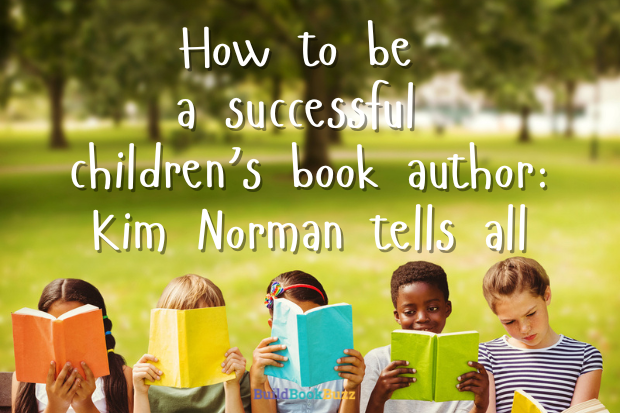
One Comment